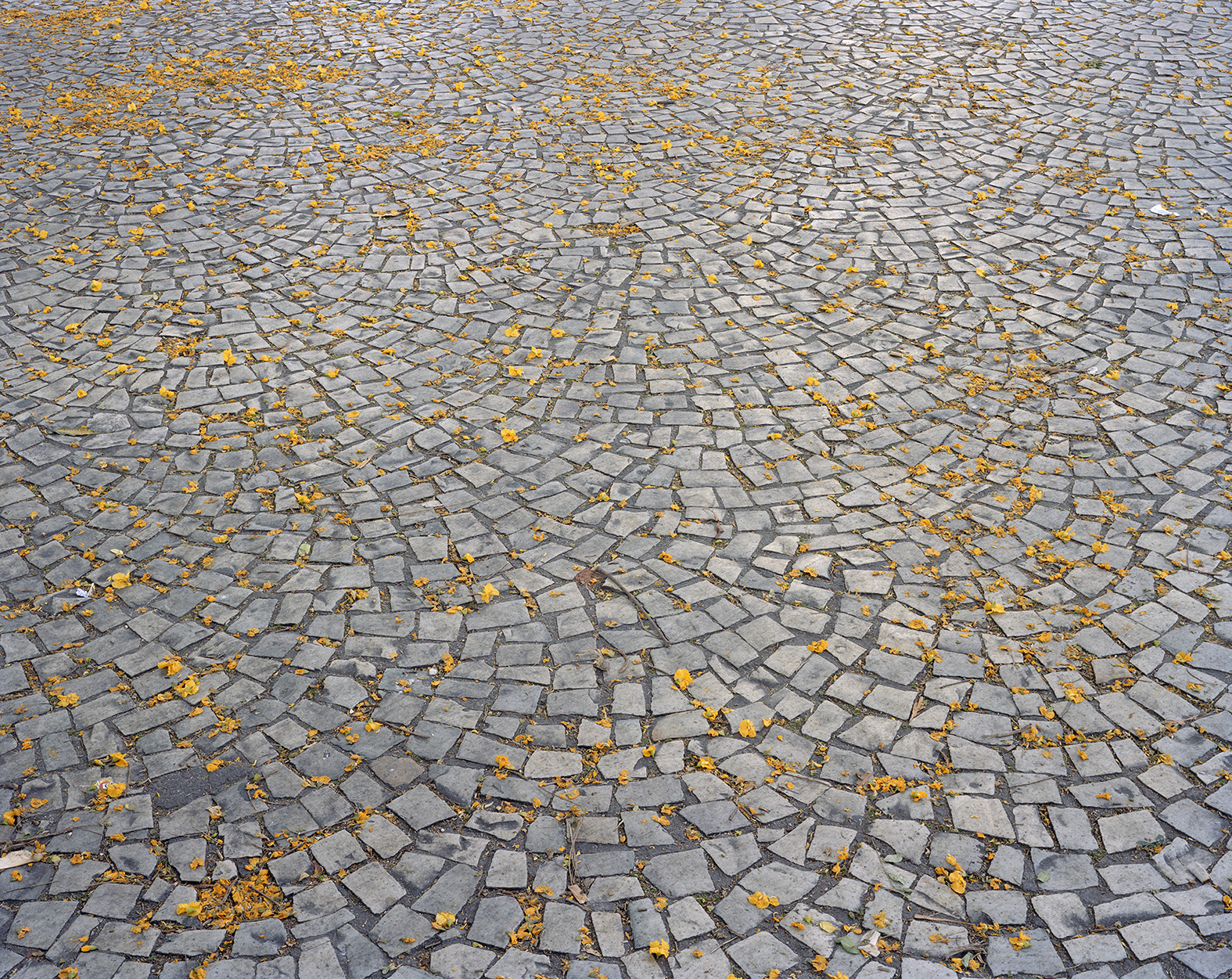
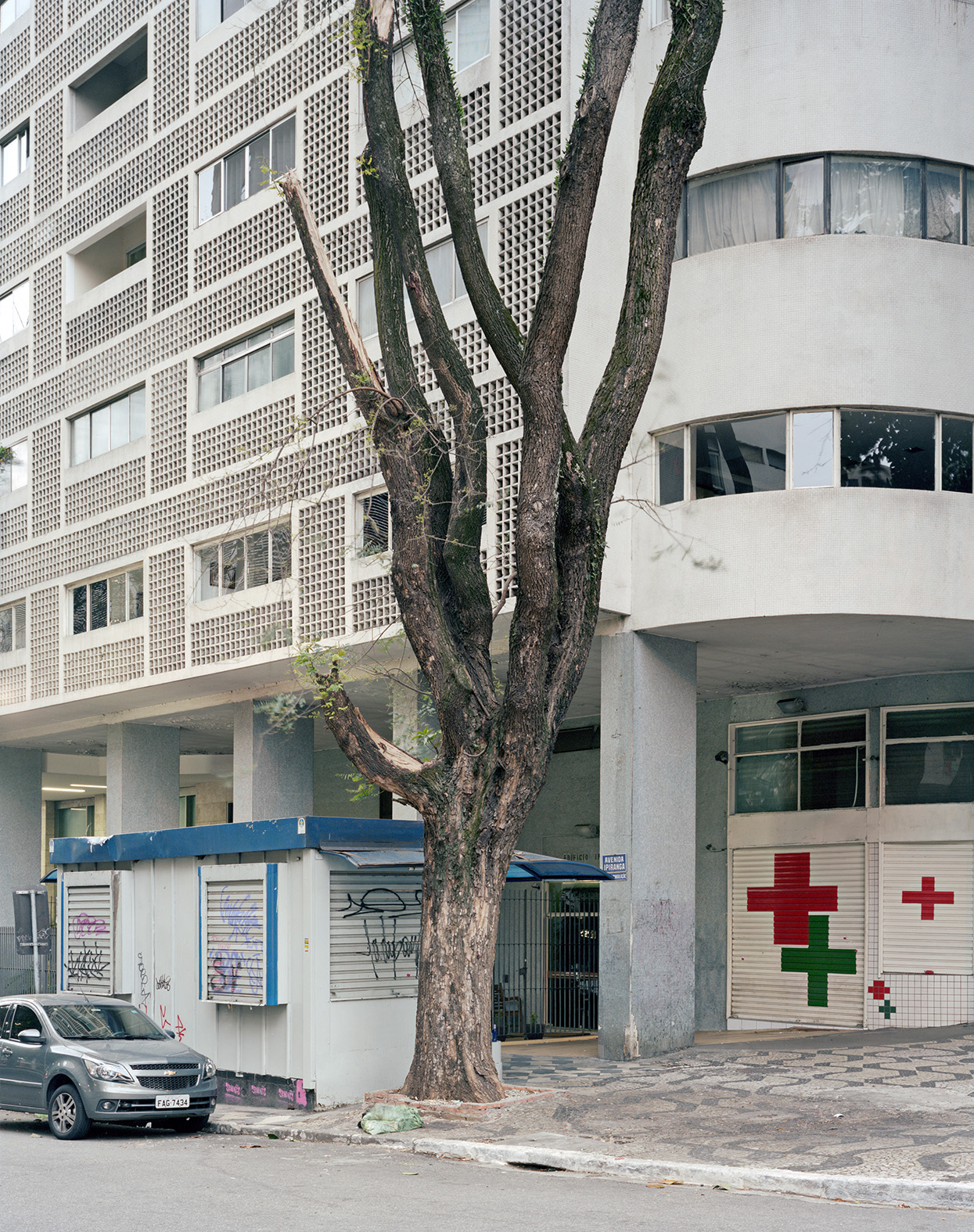
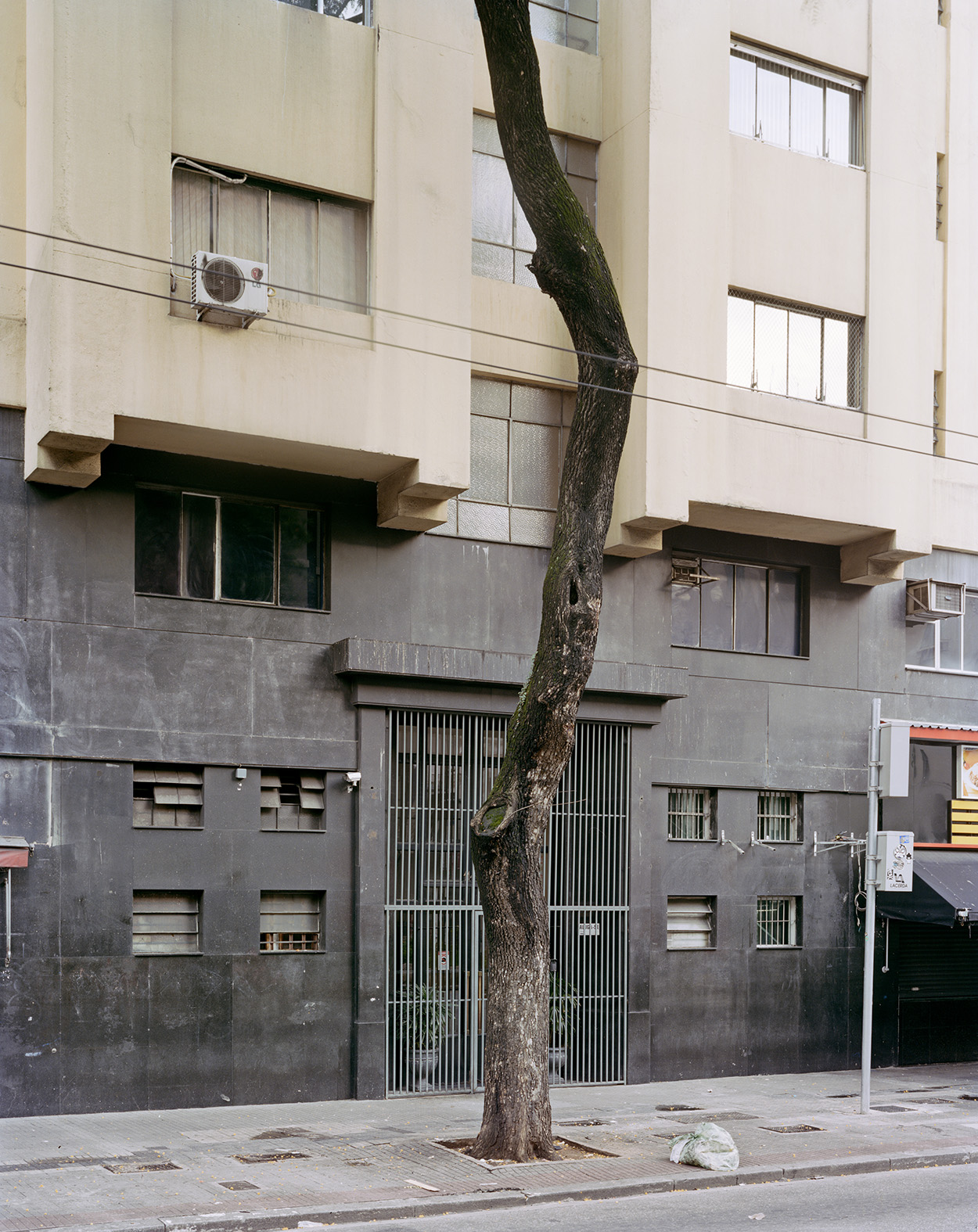
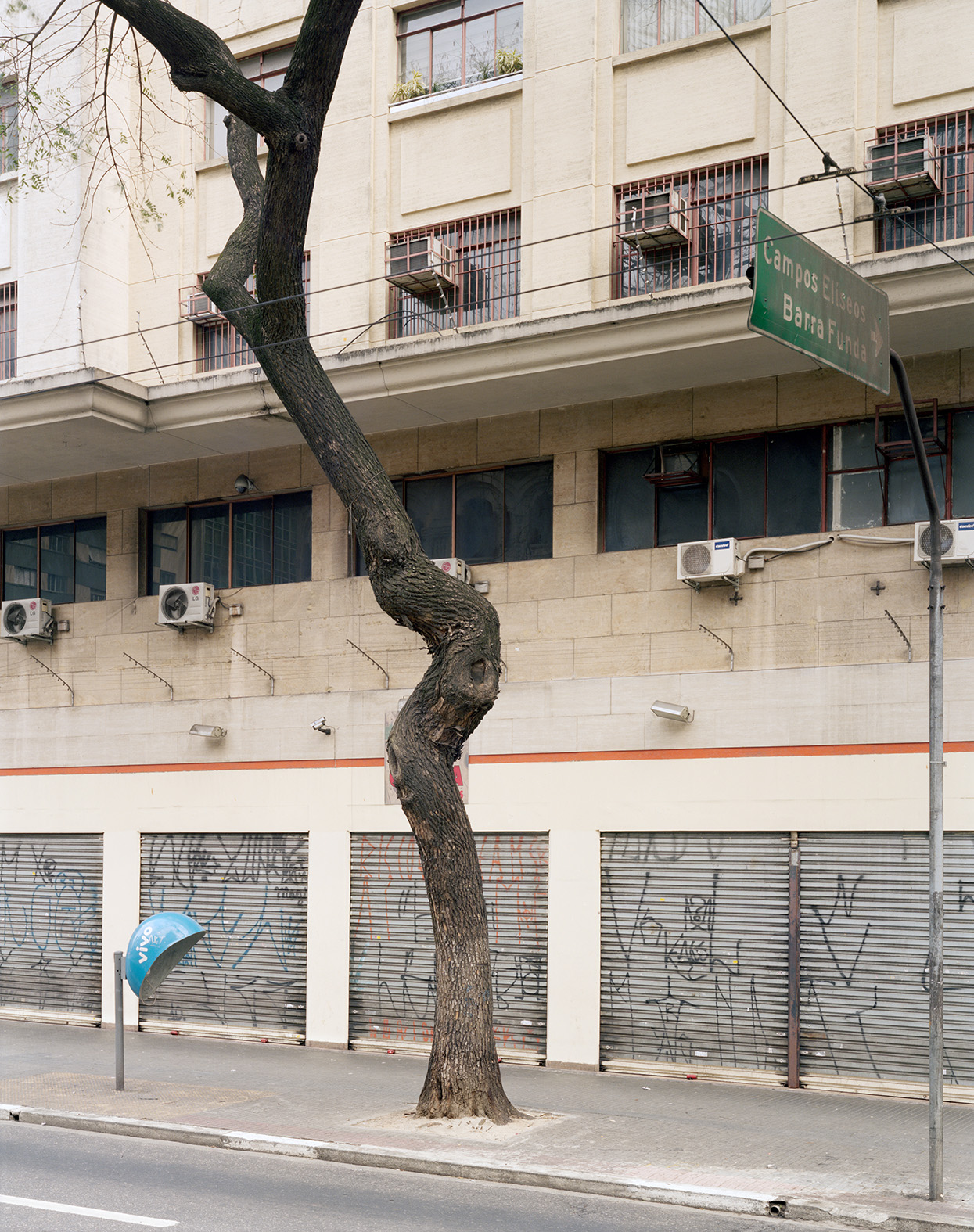

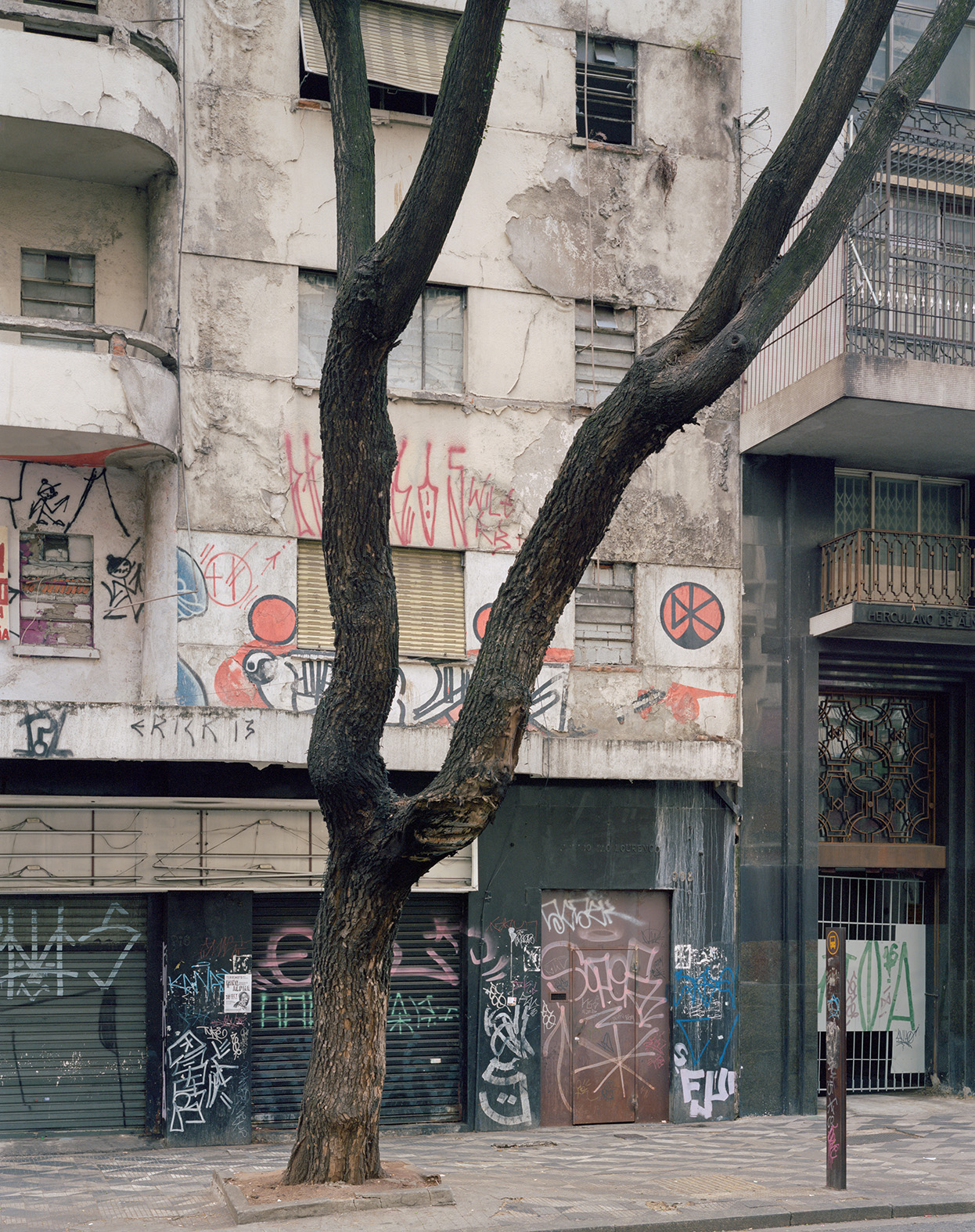
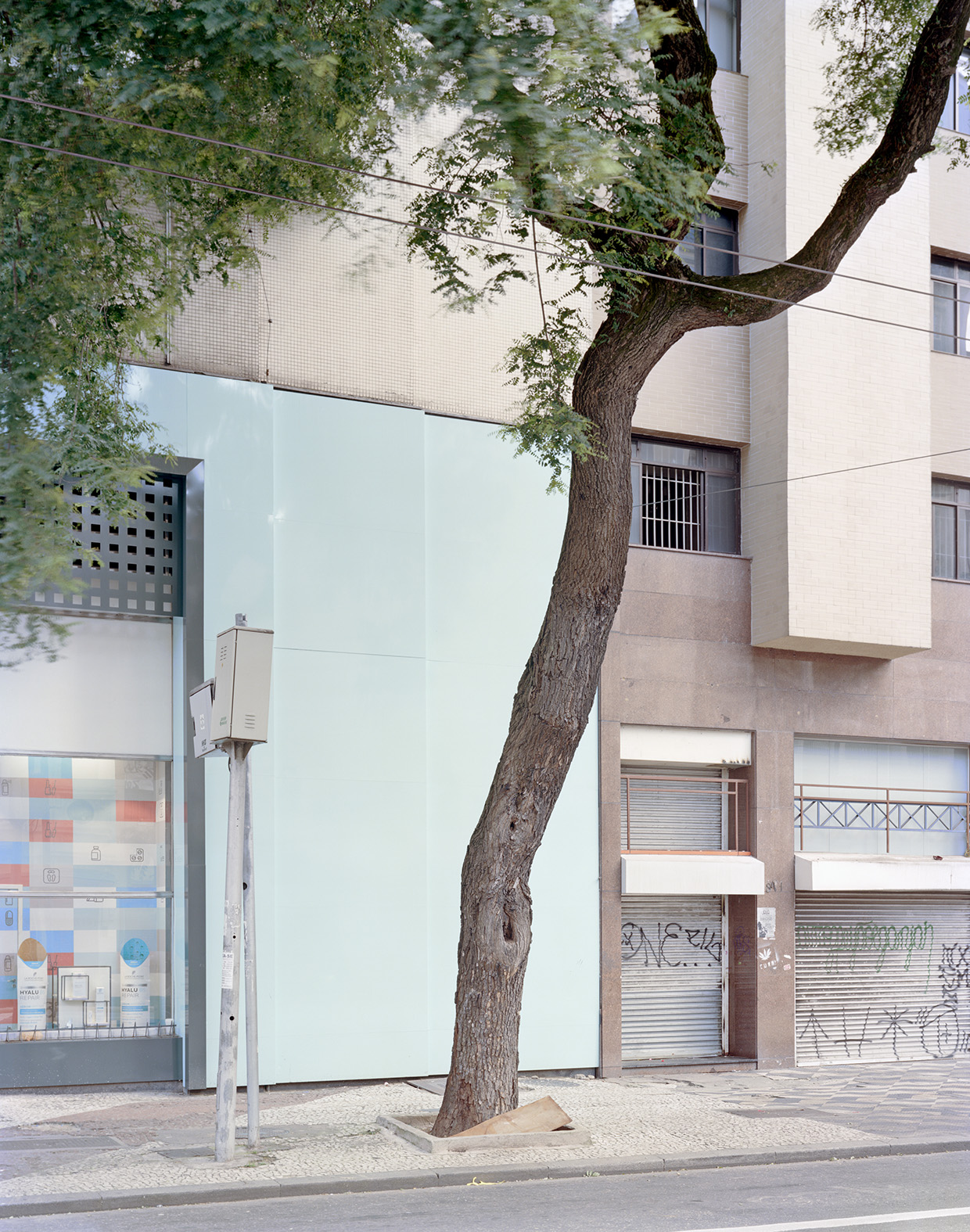
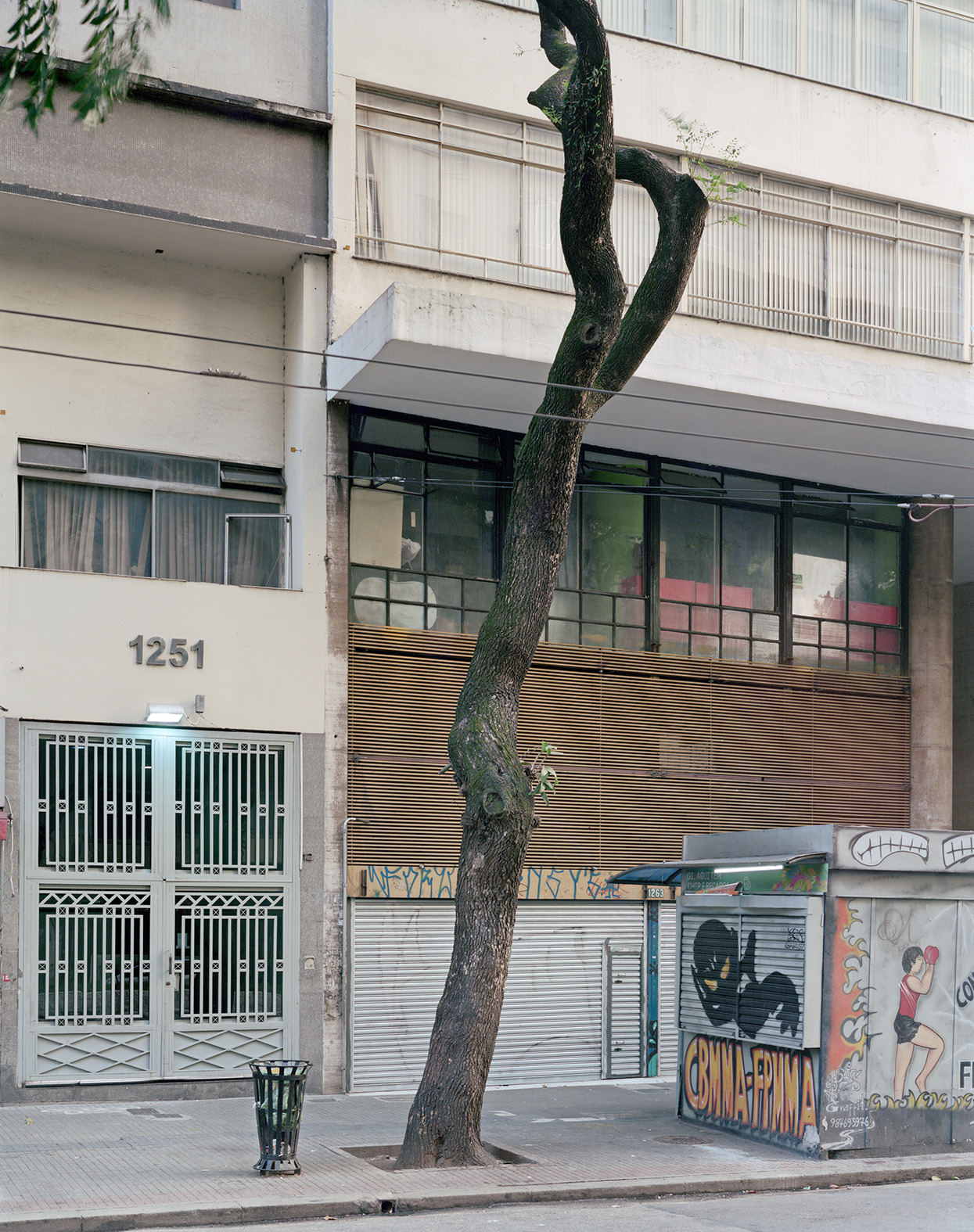
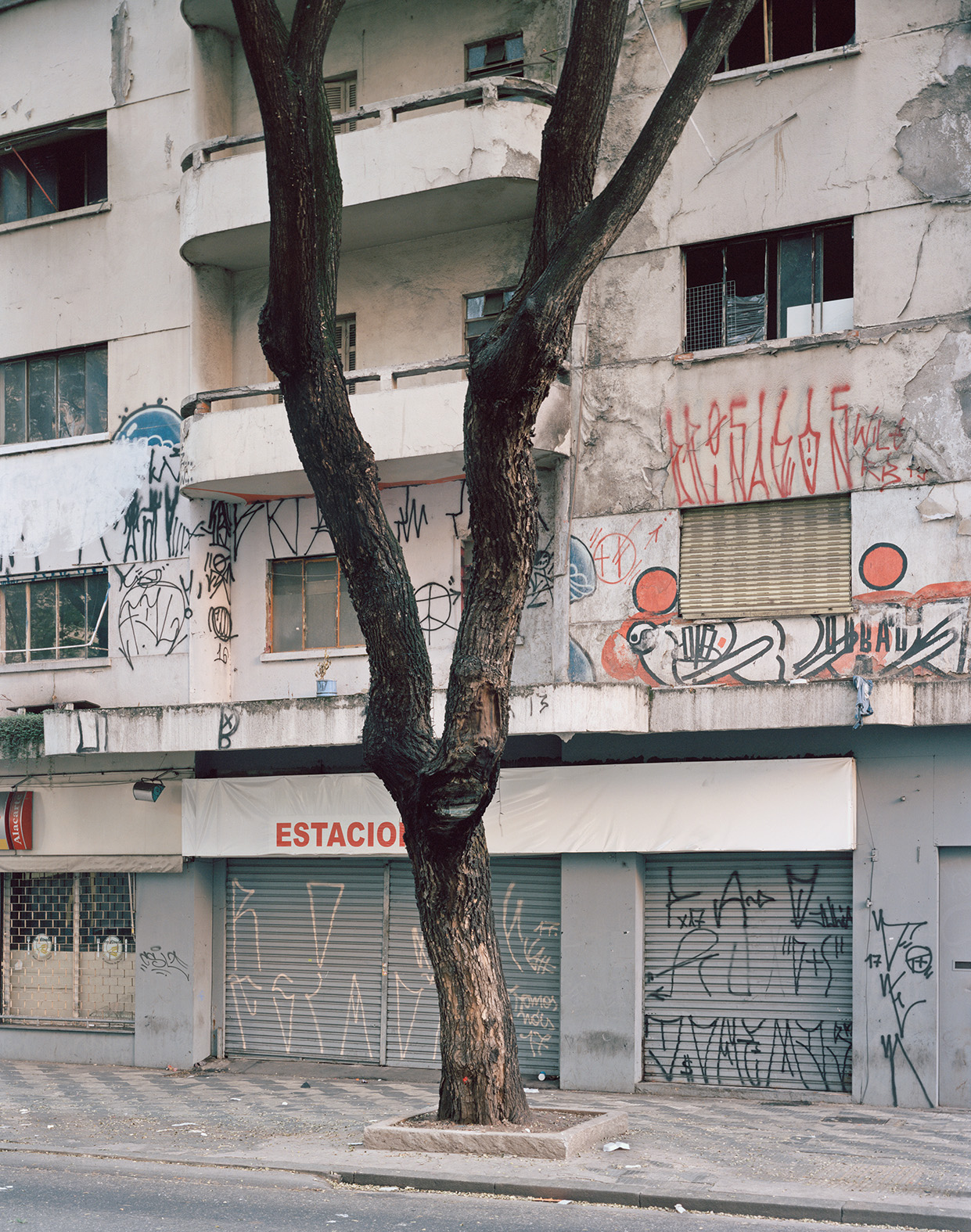
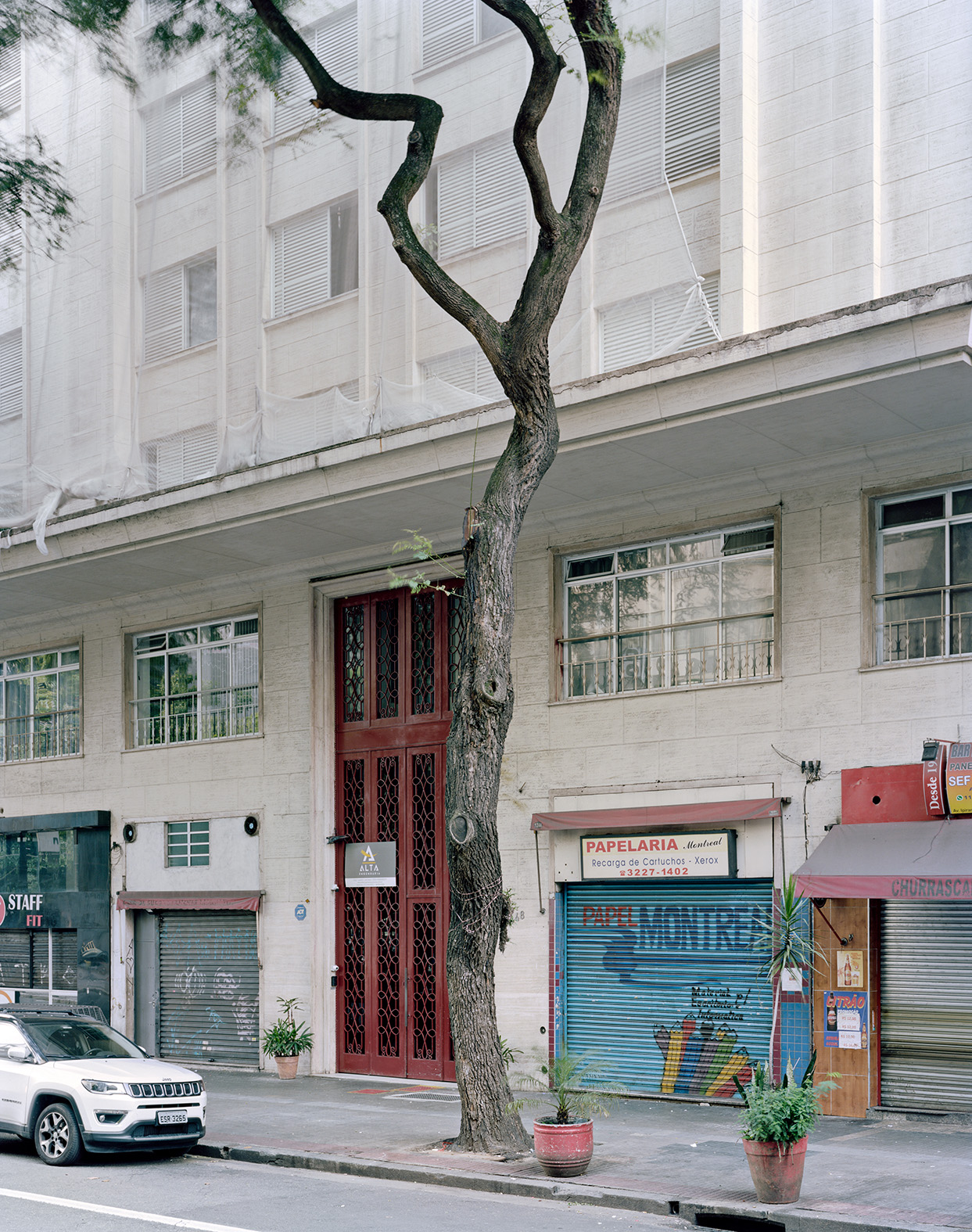
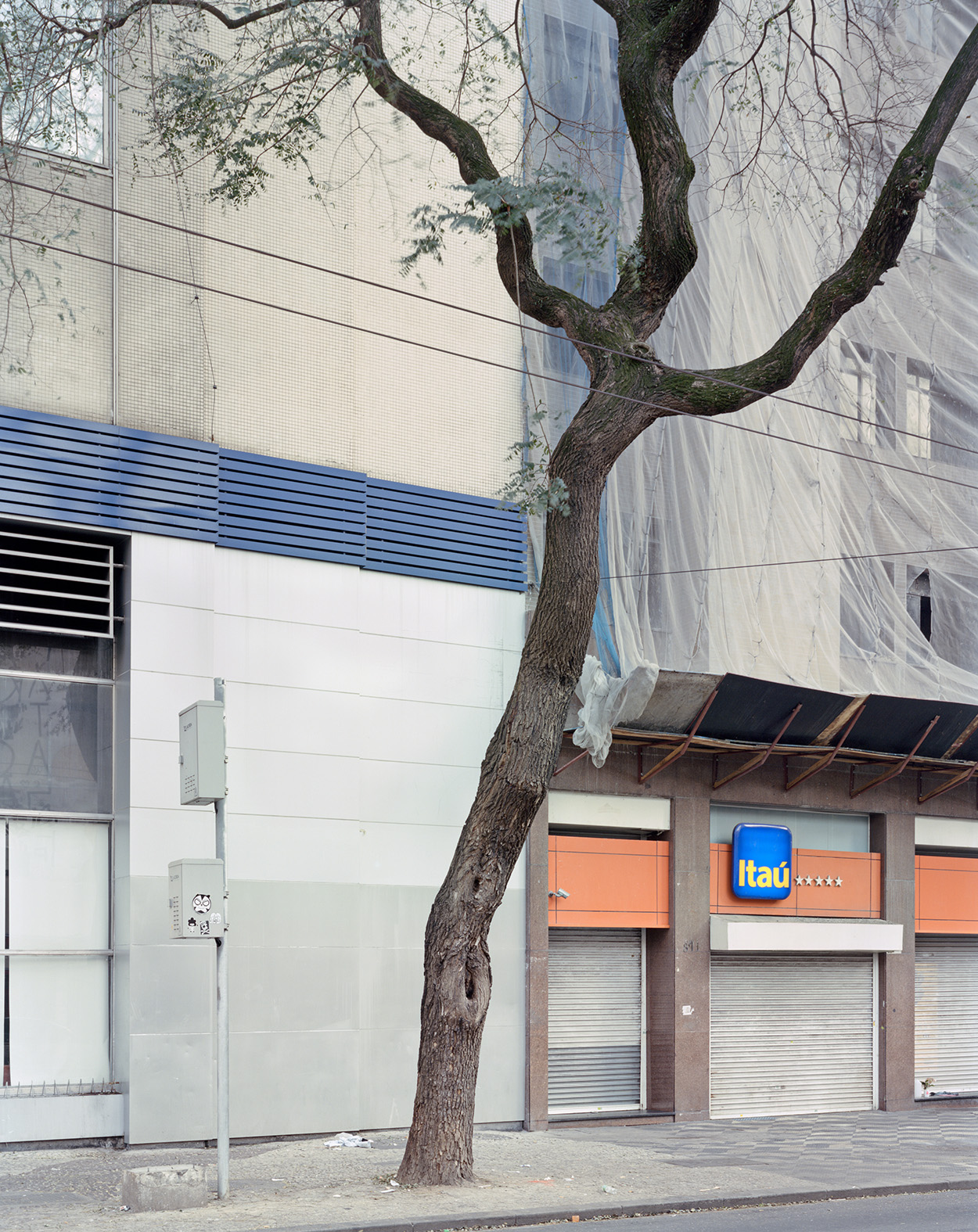
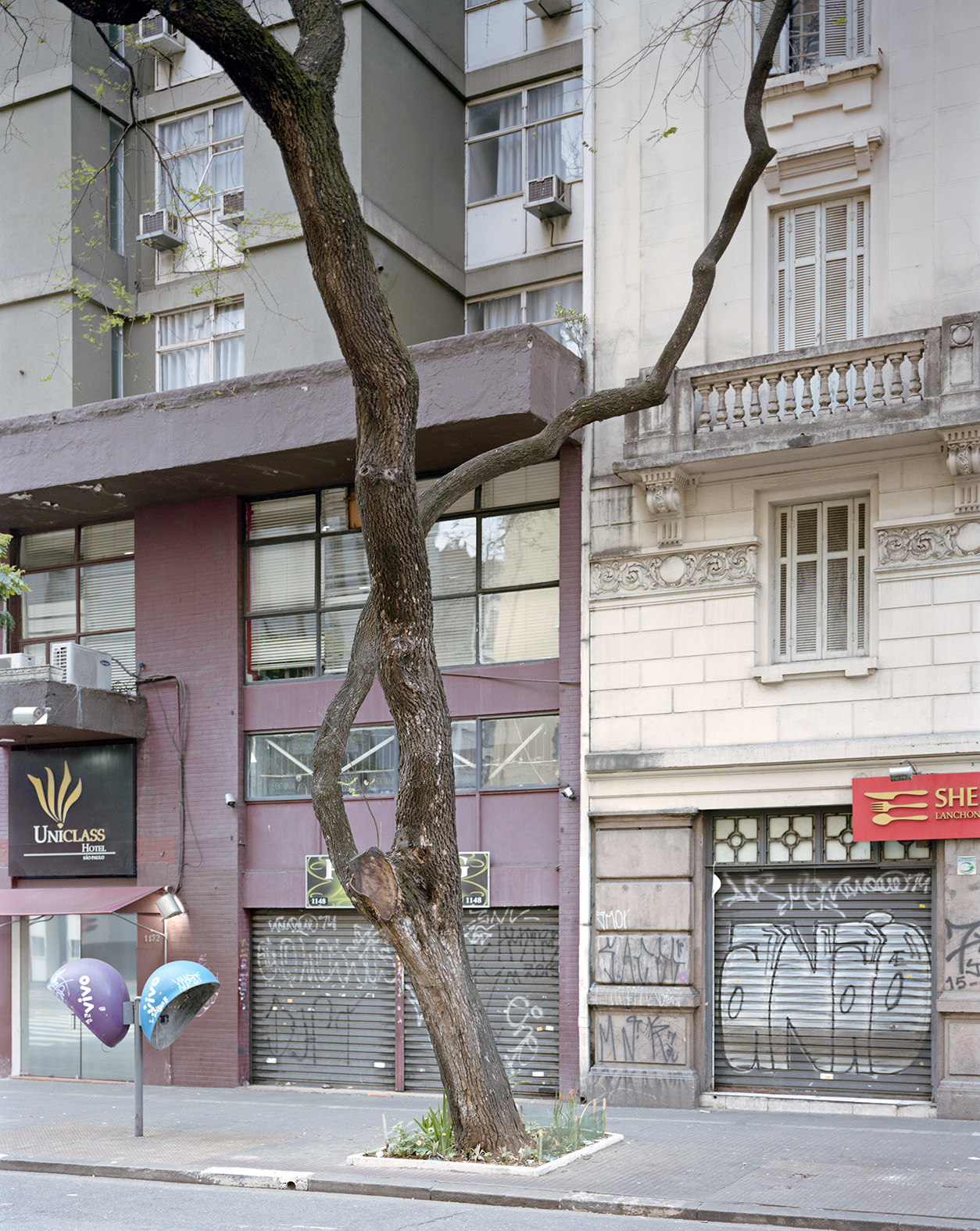
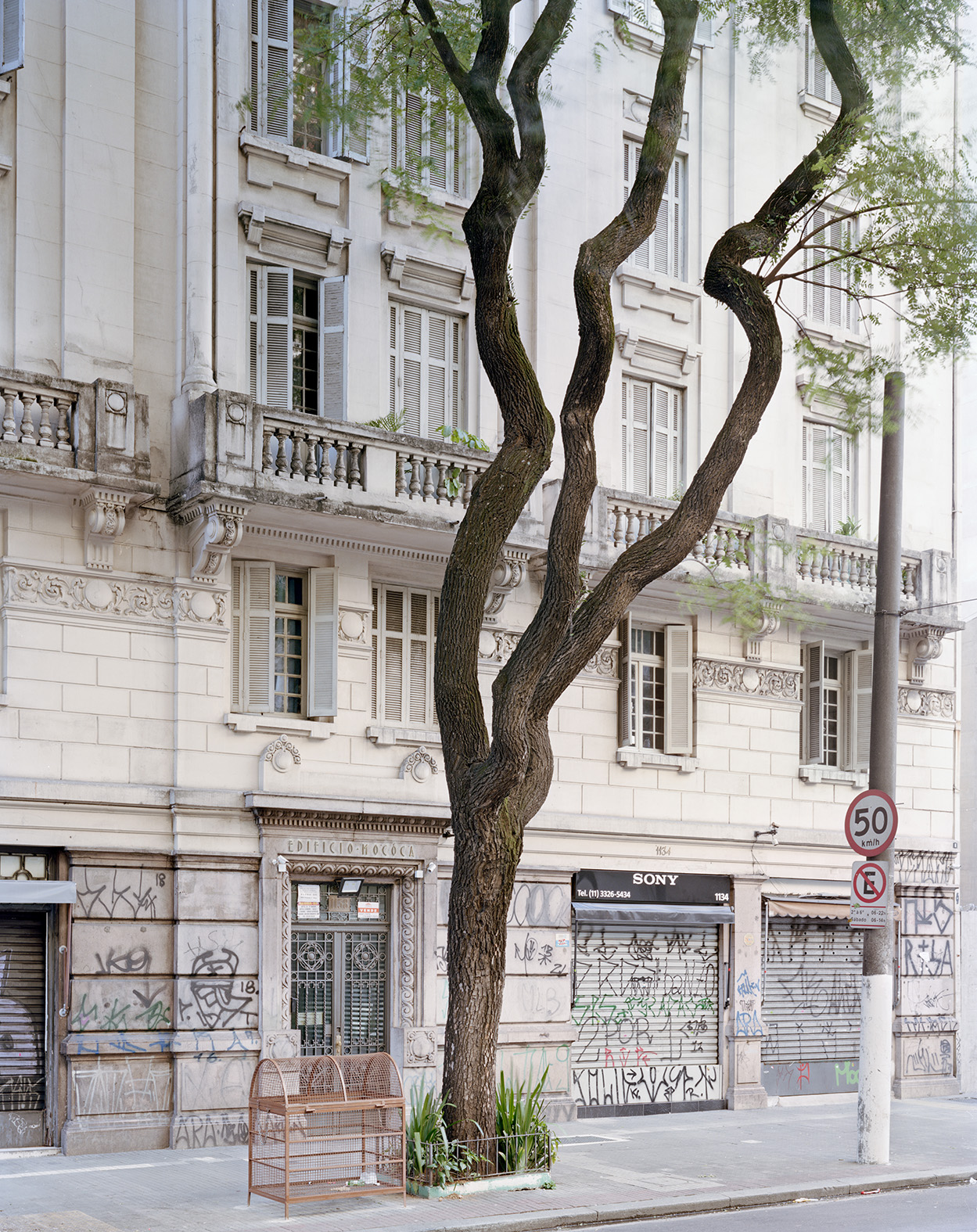
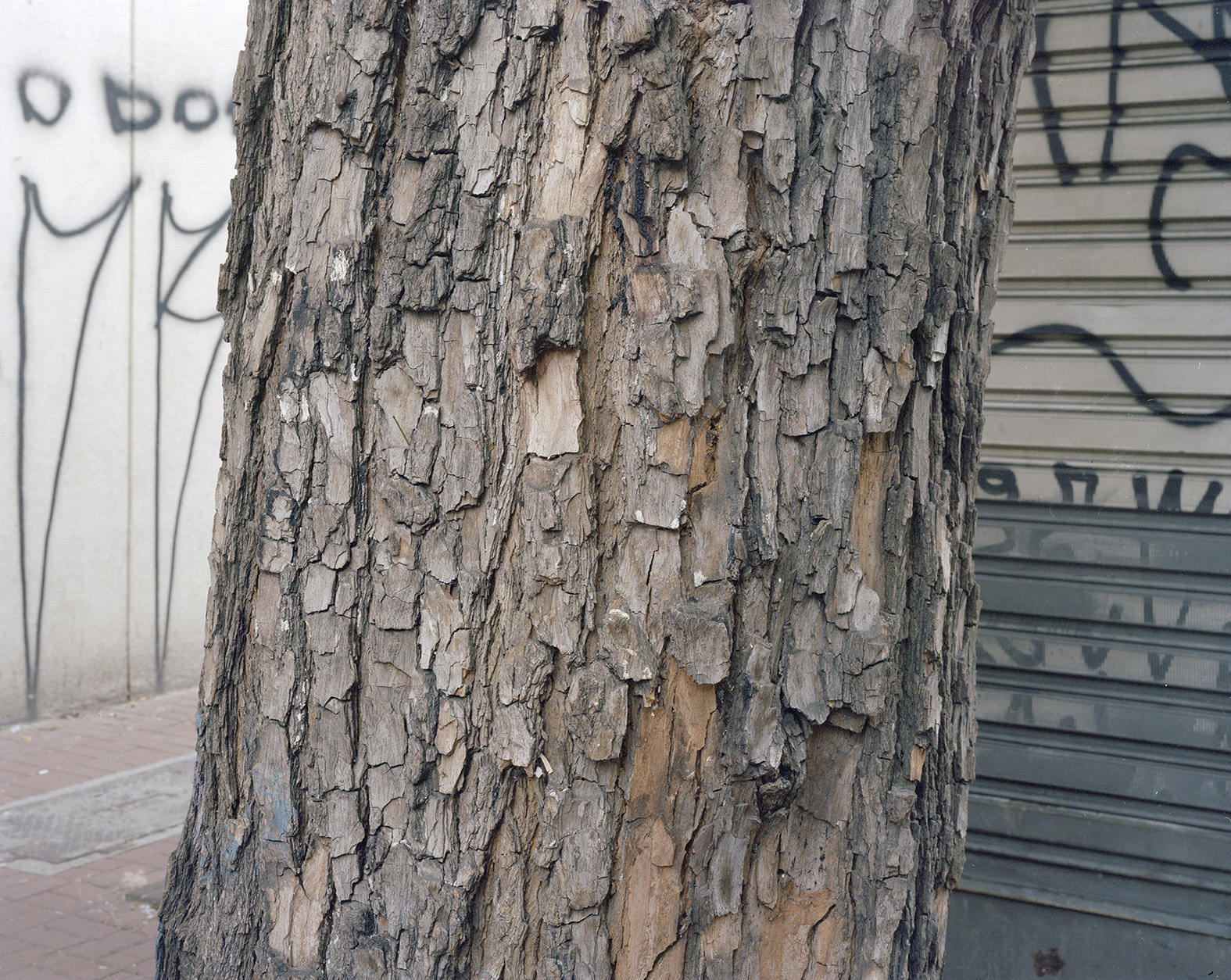

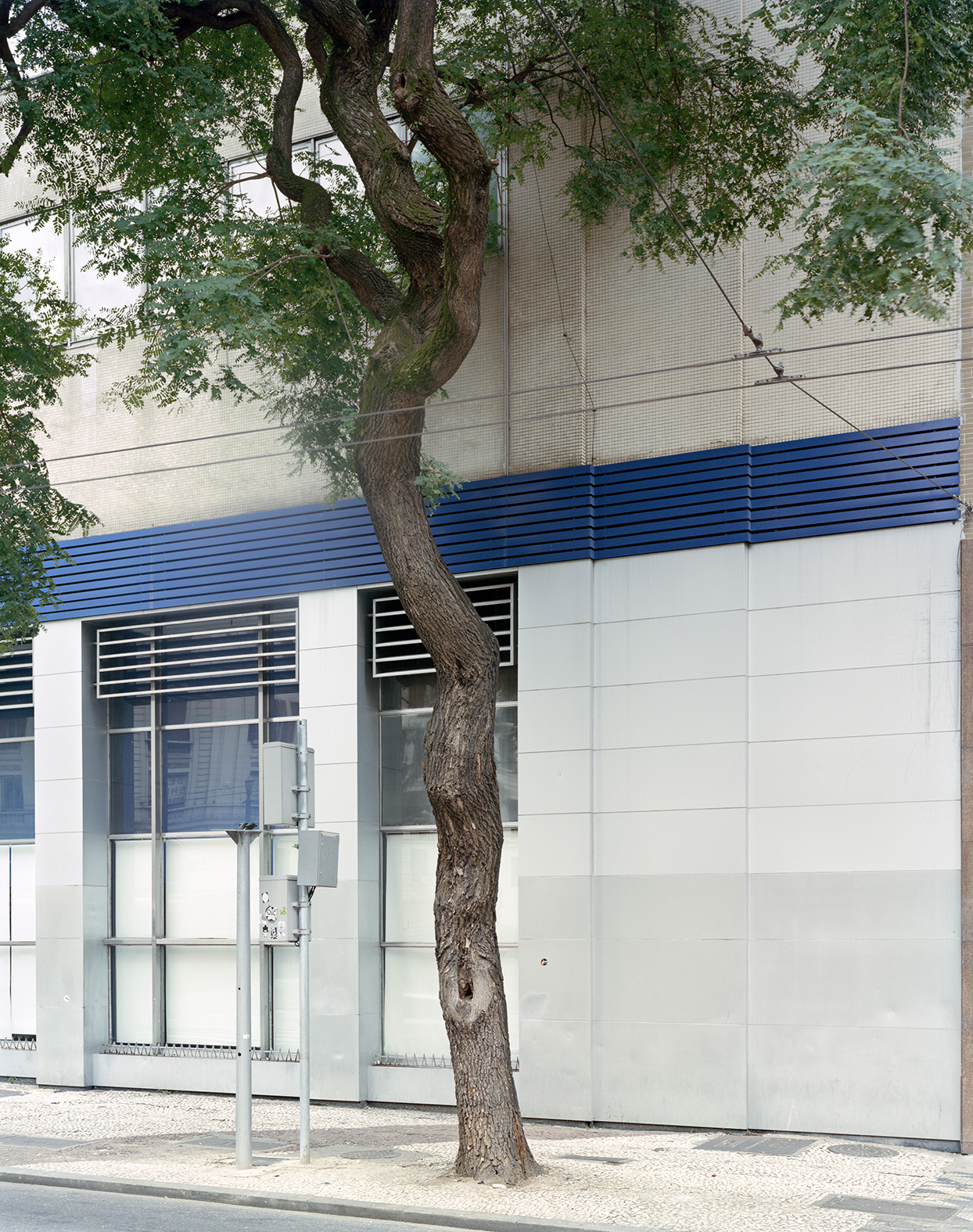
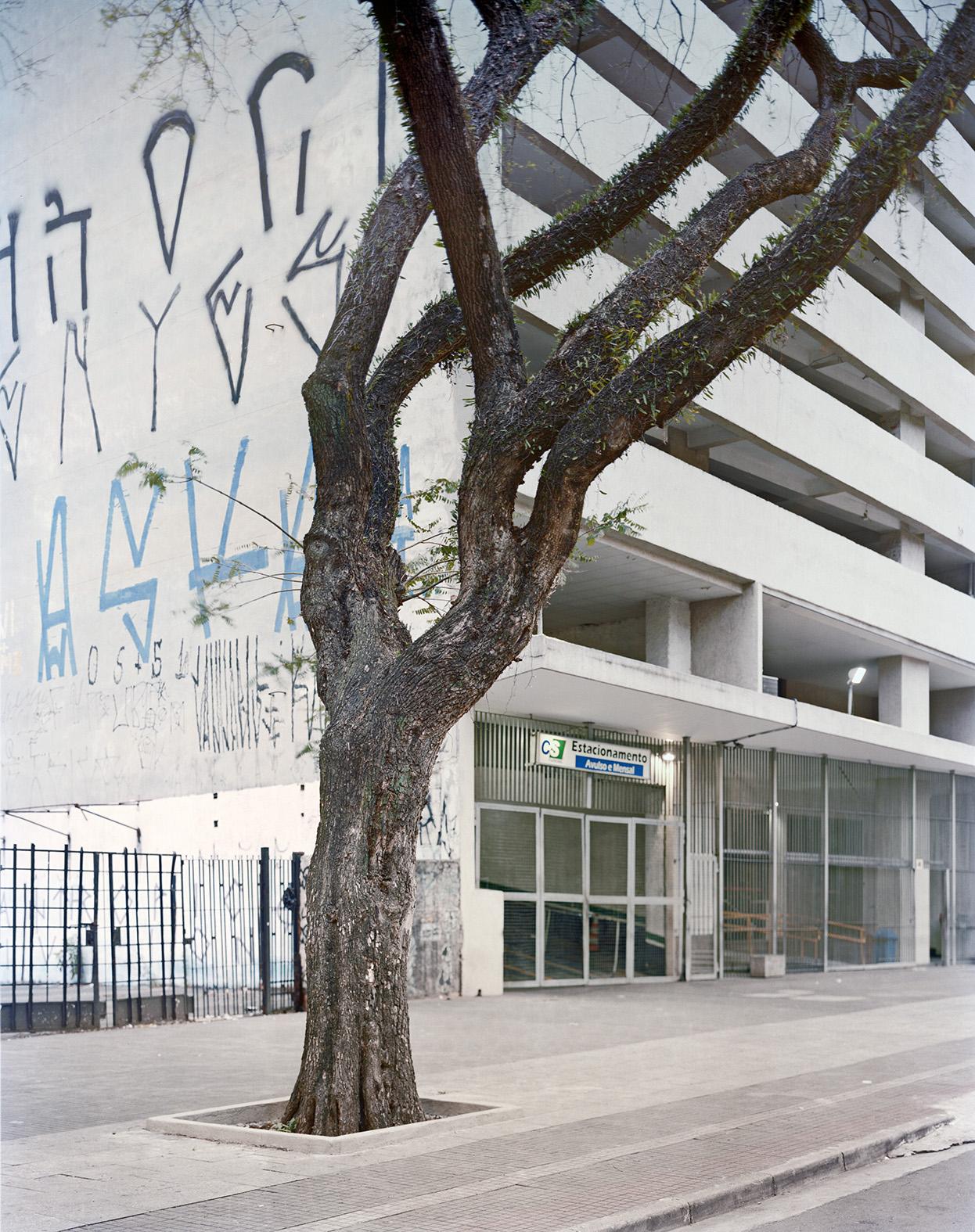
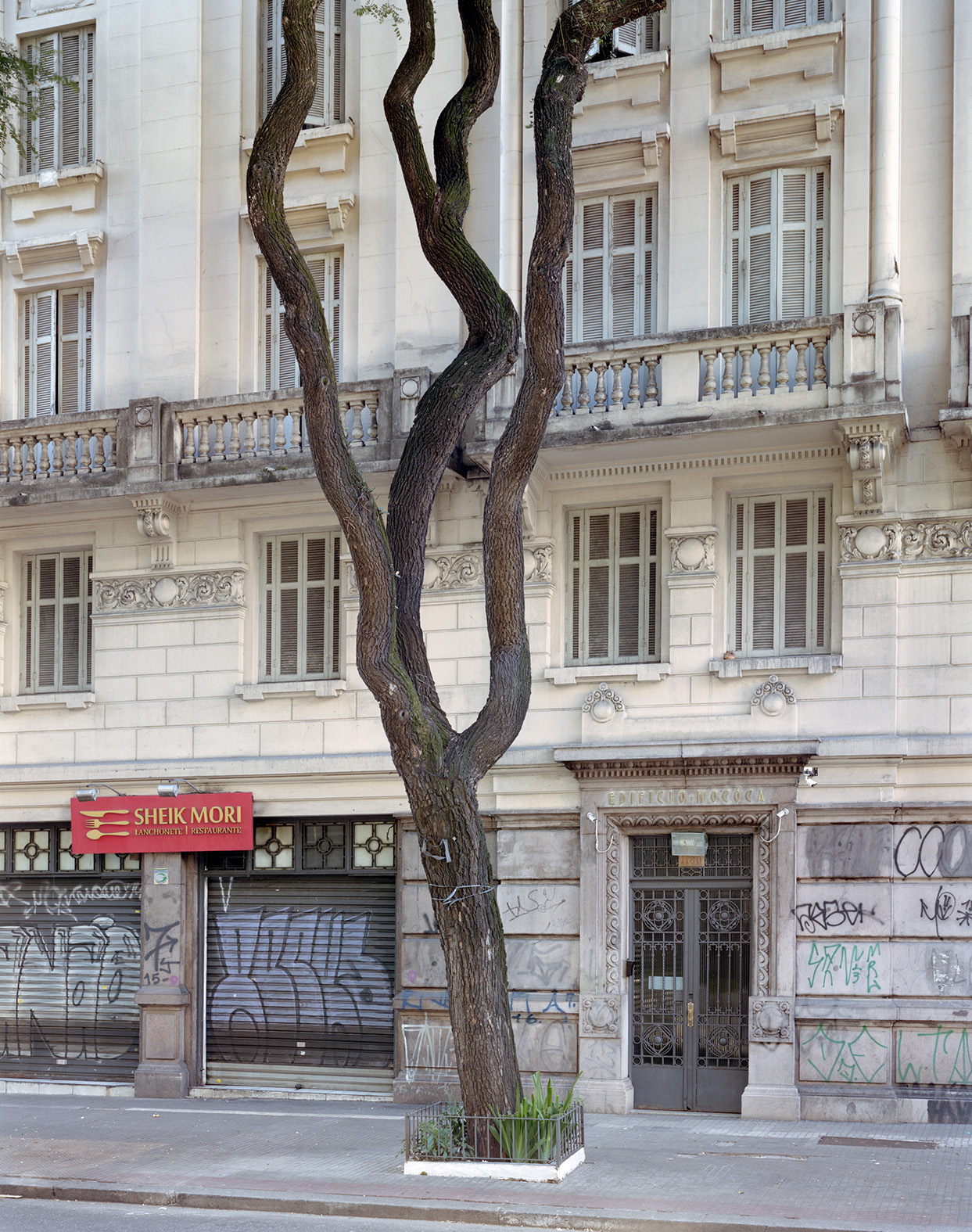





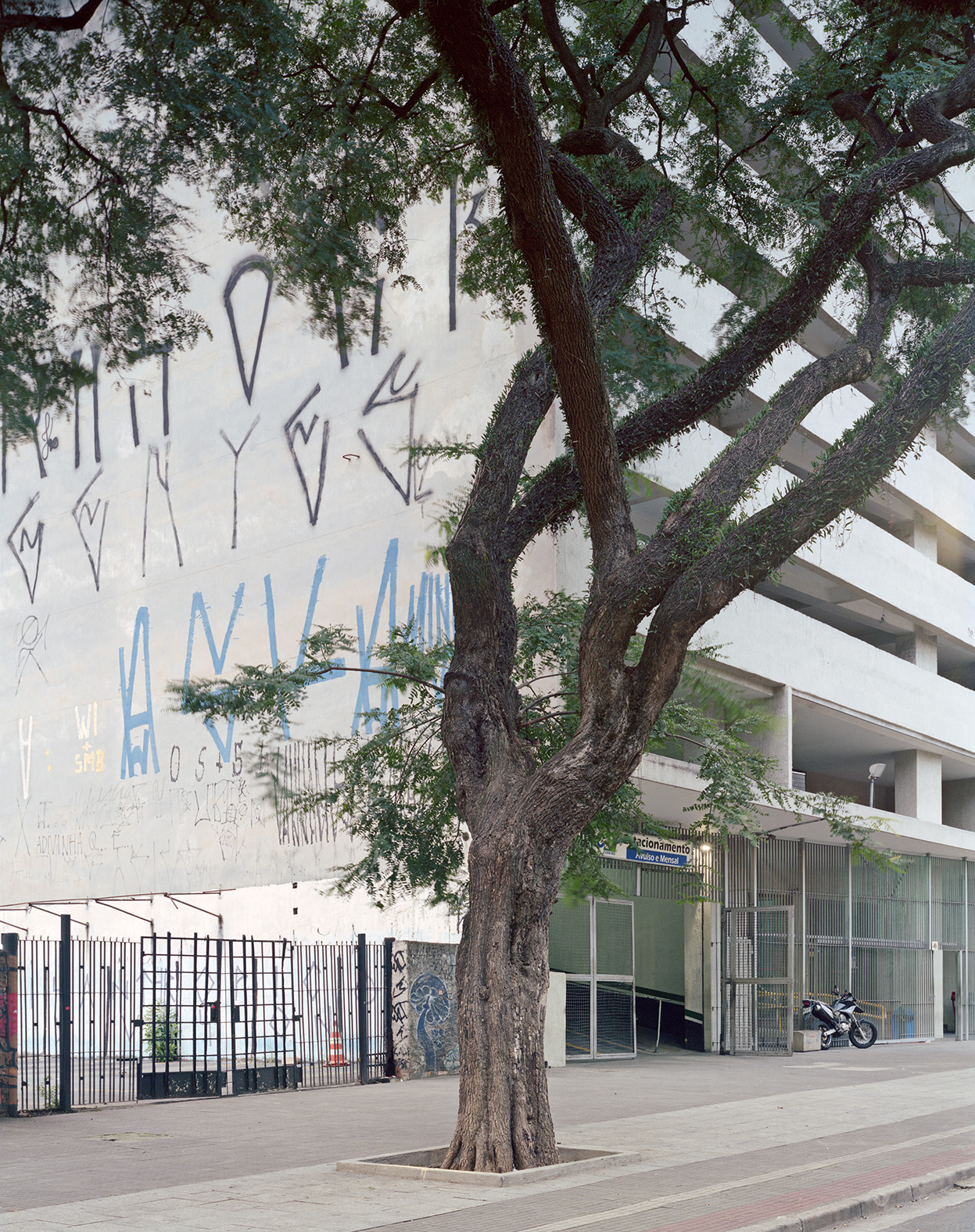


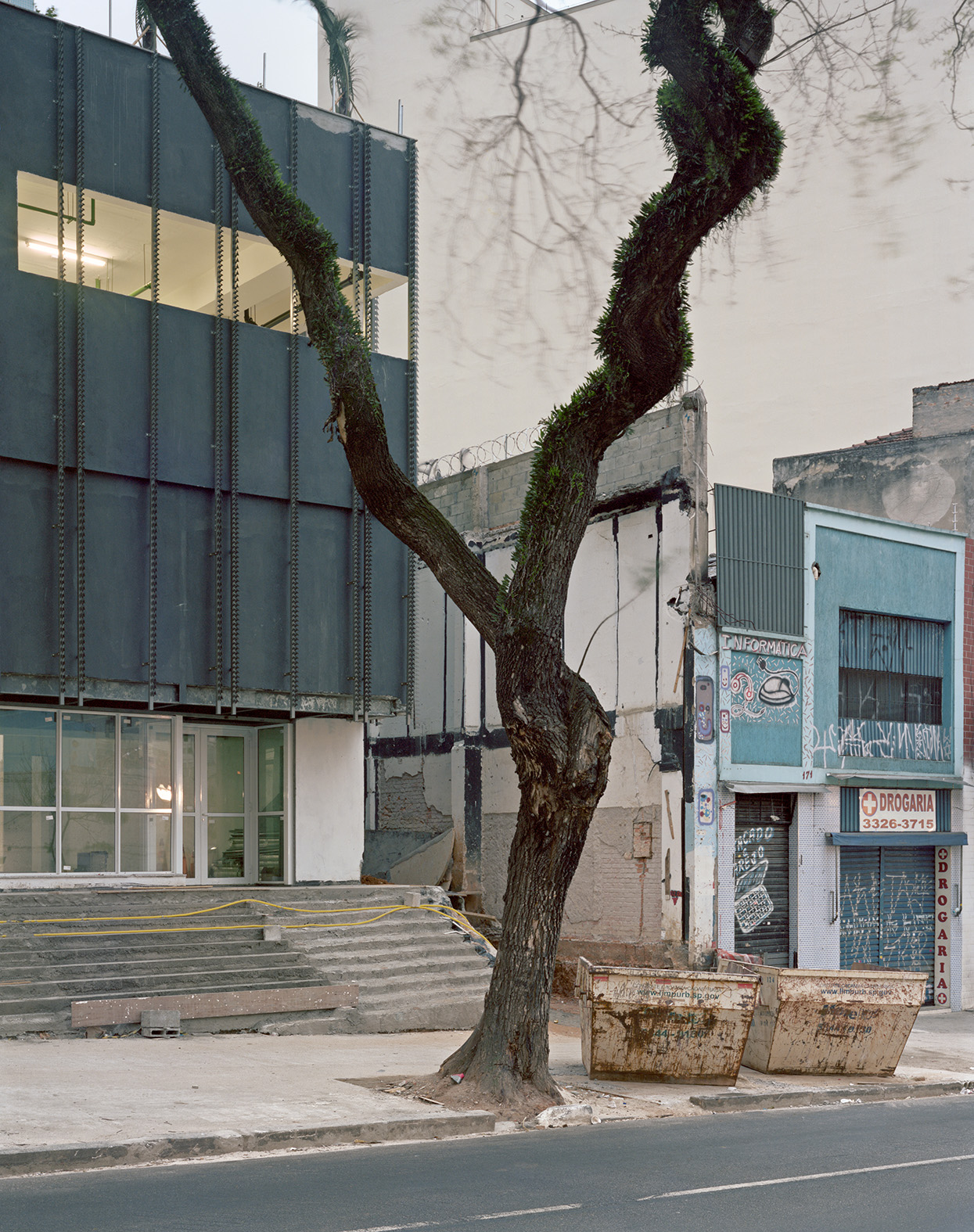
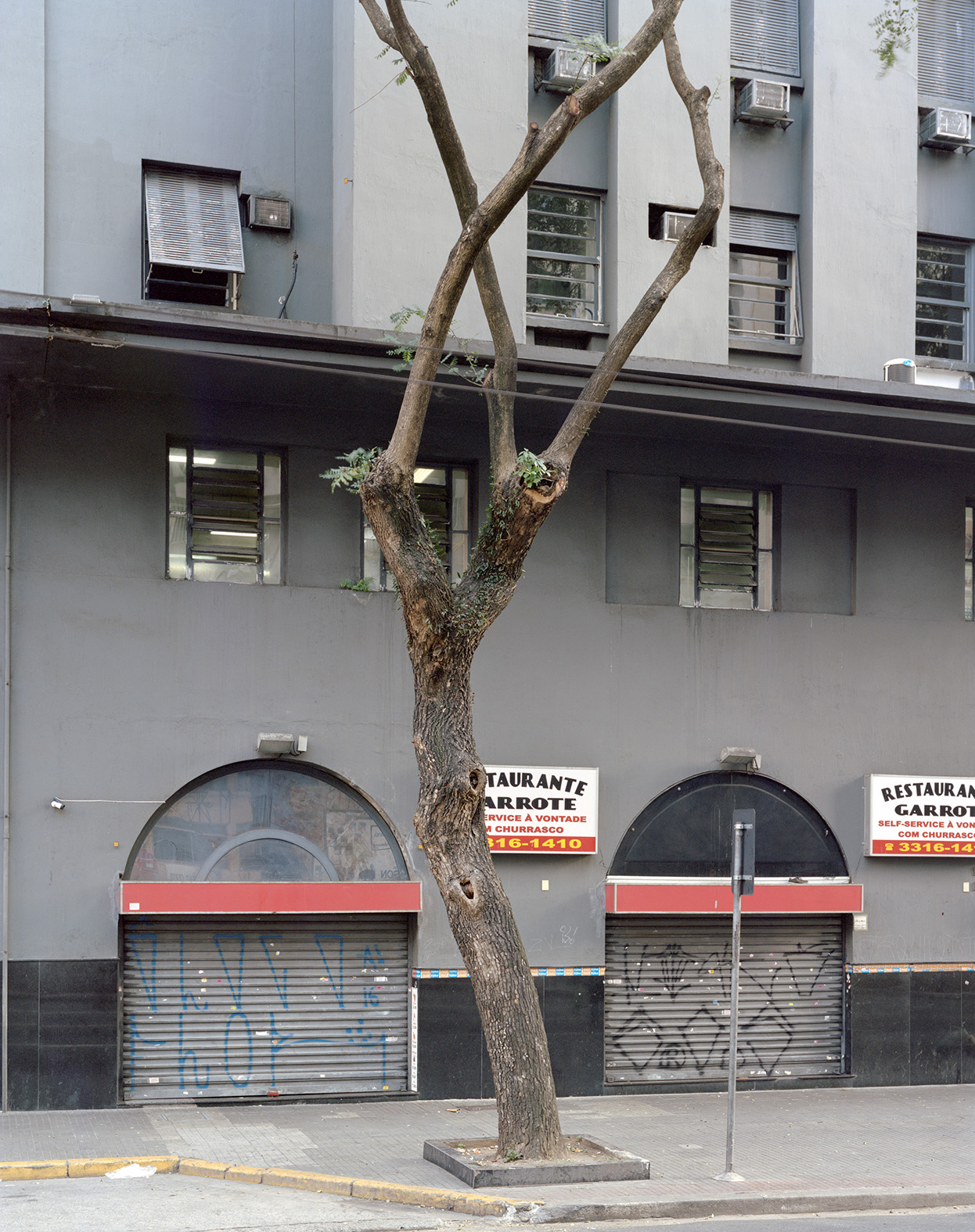
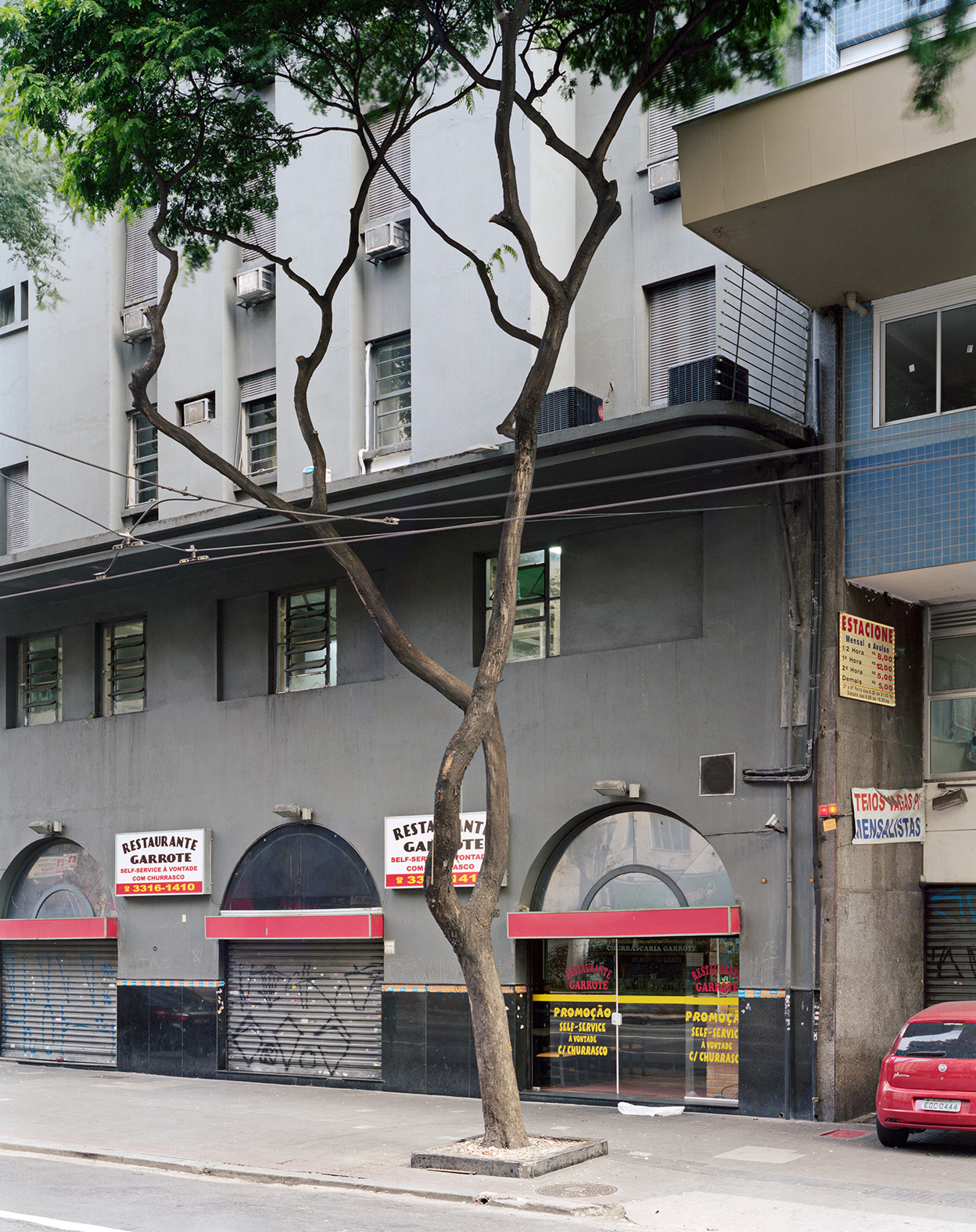
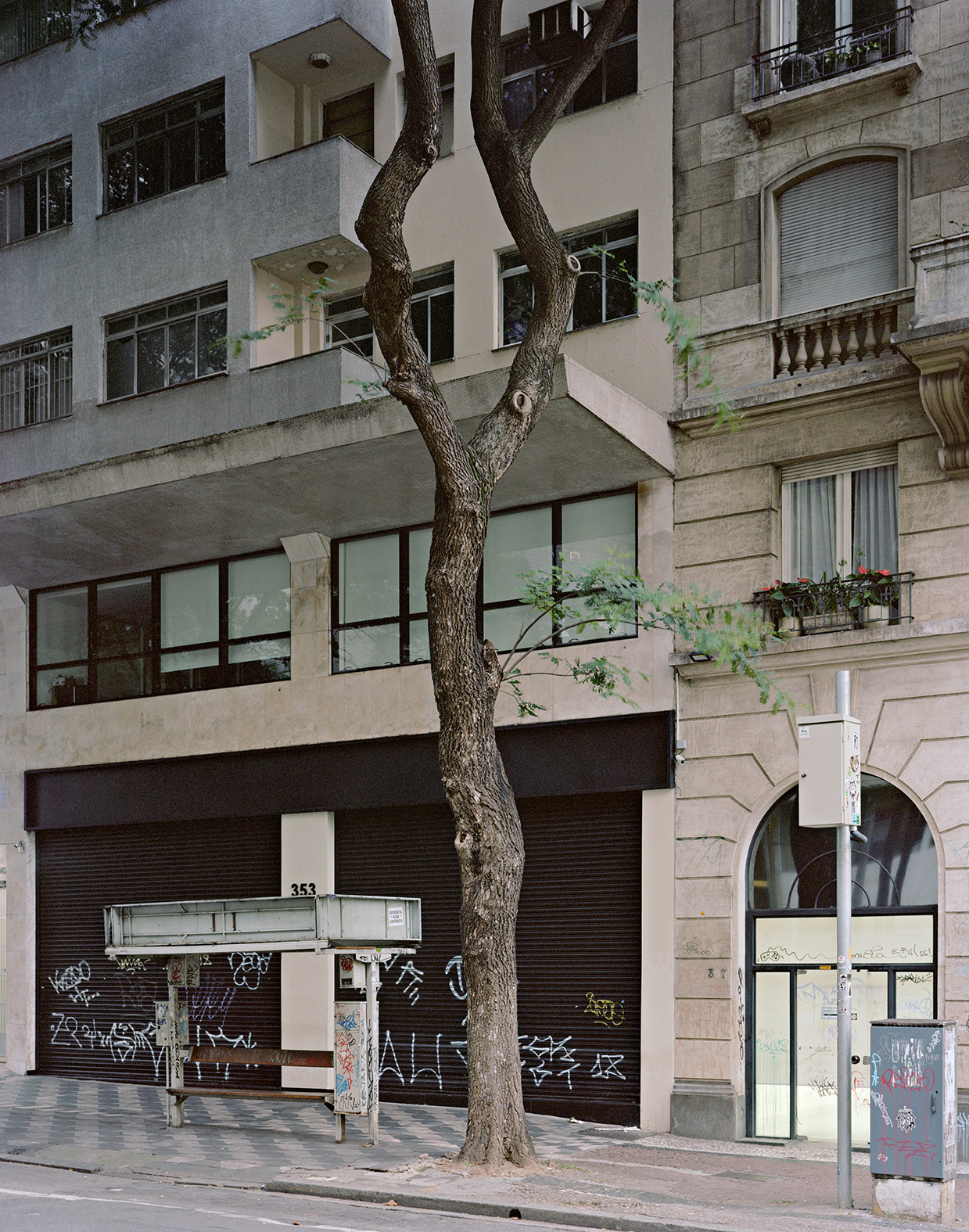
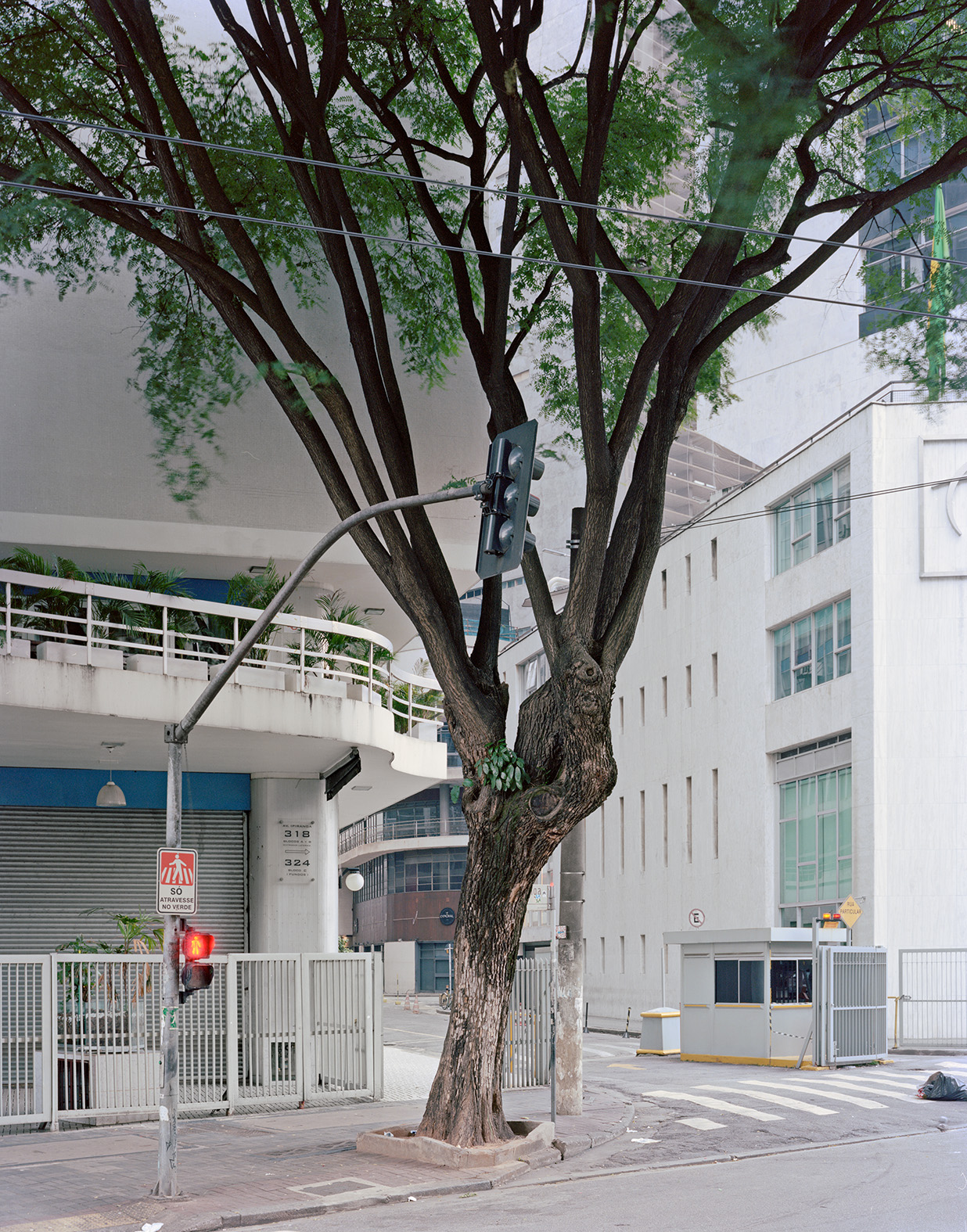
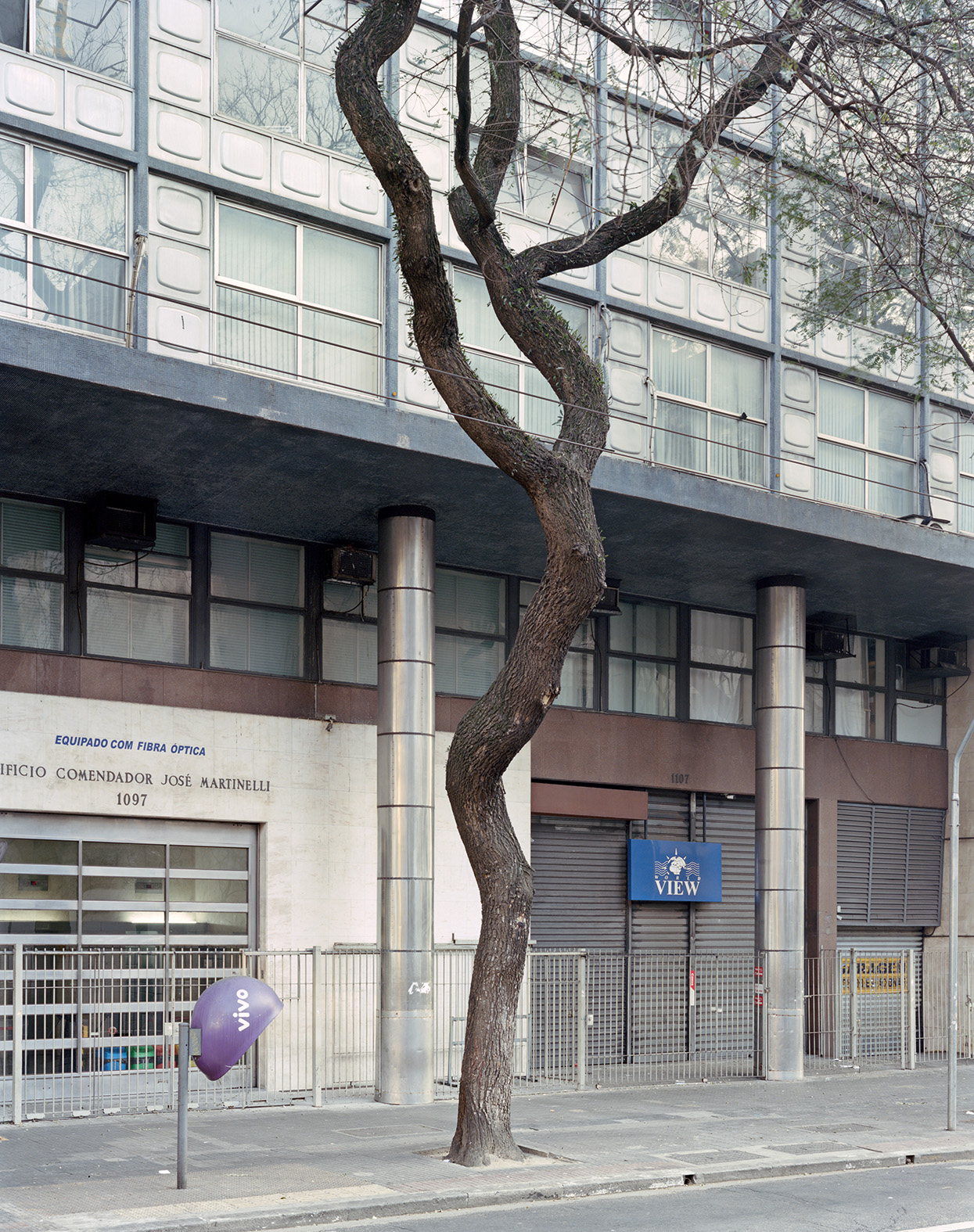
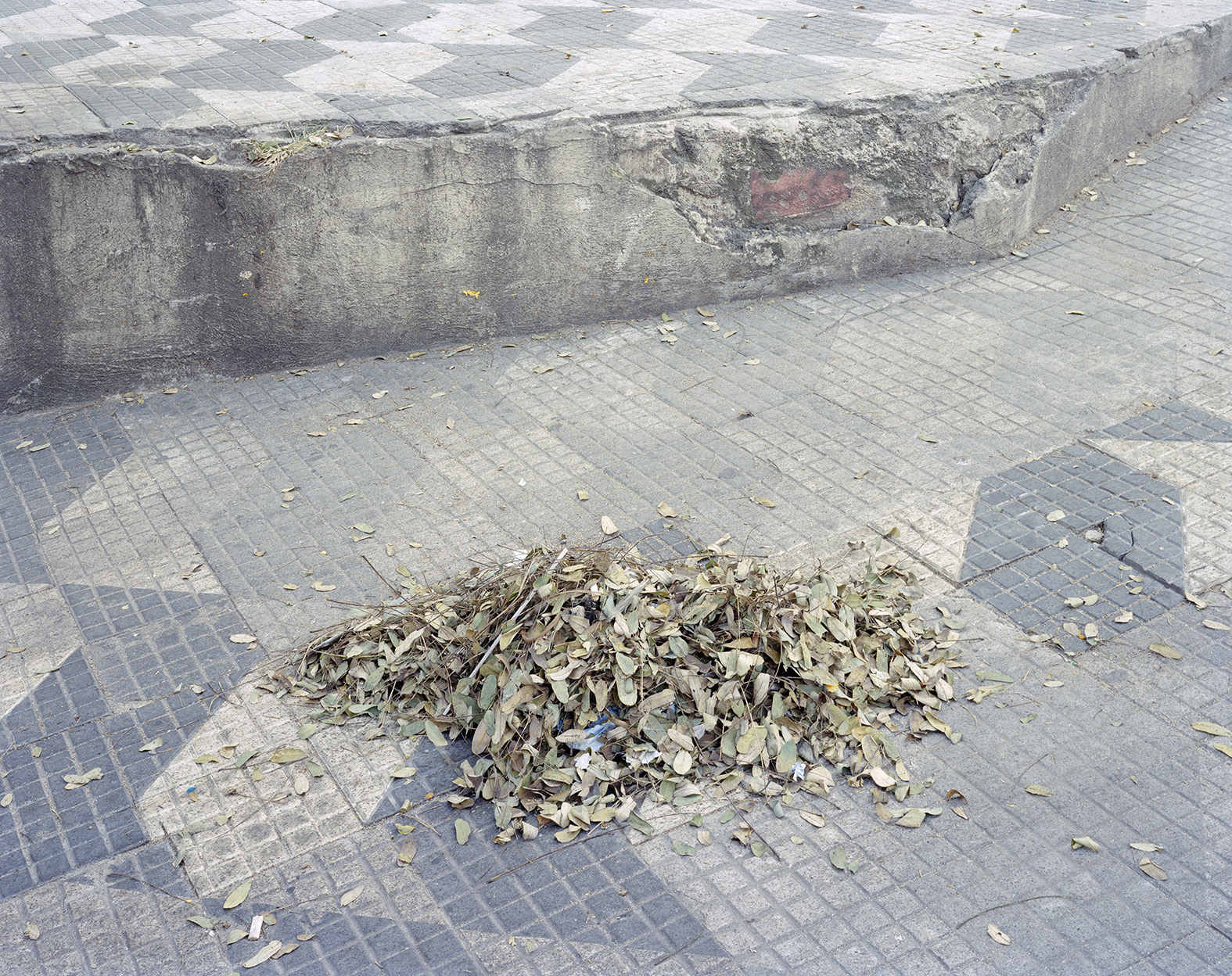



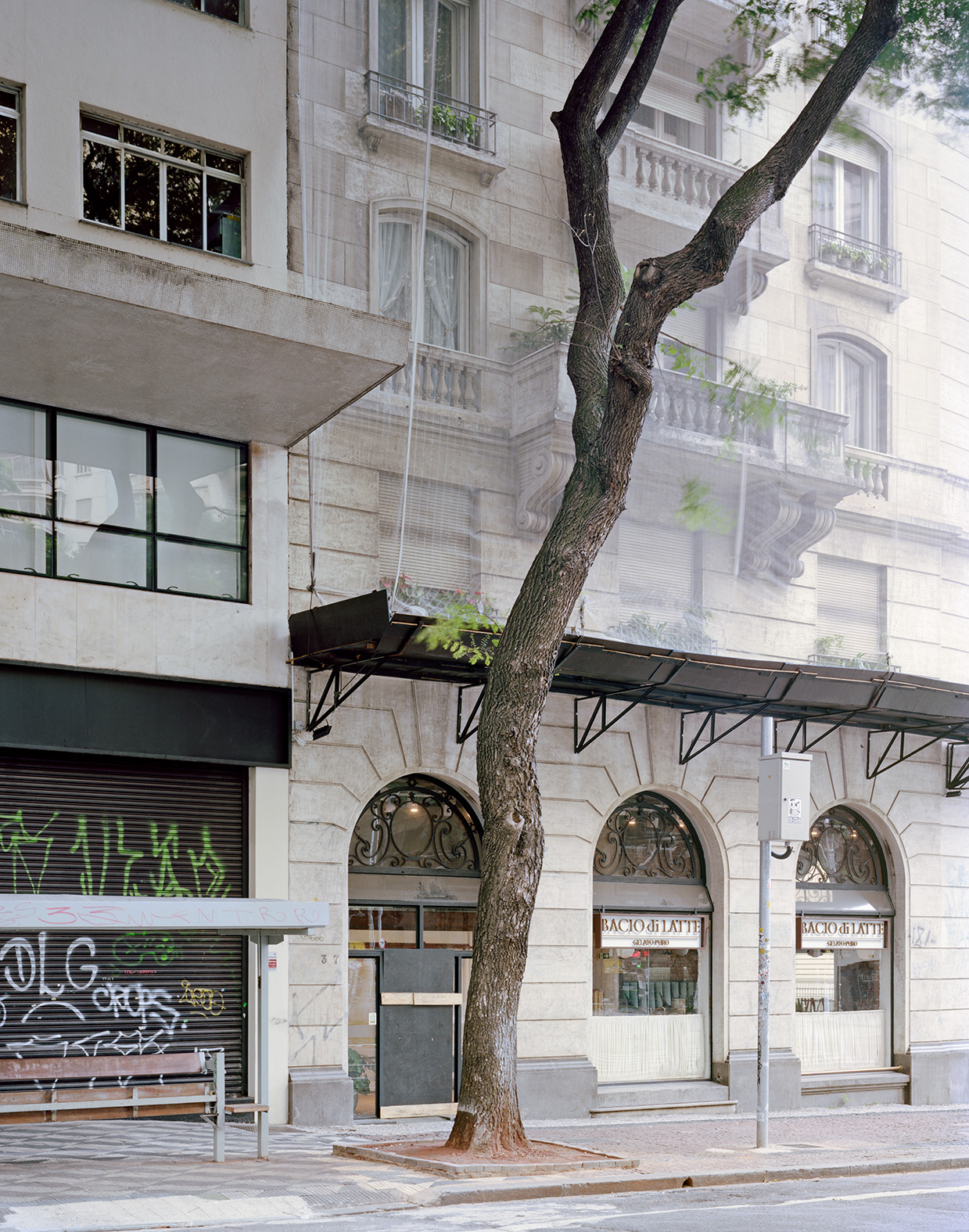

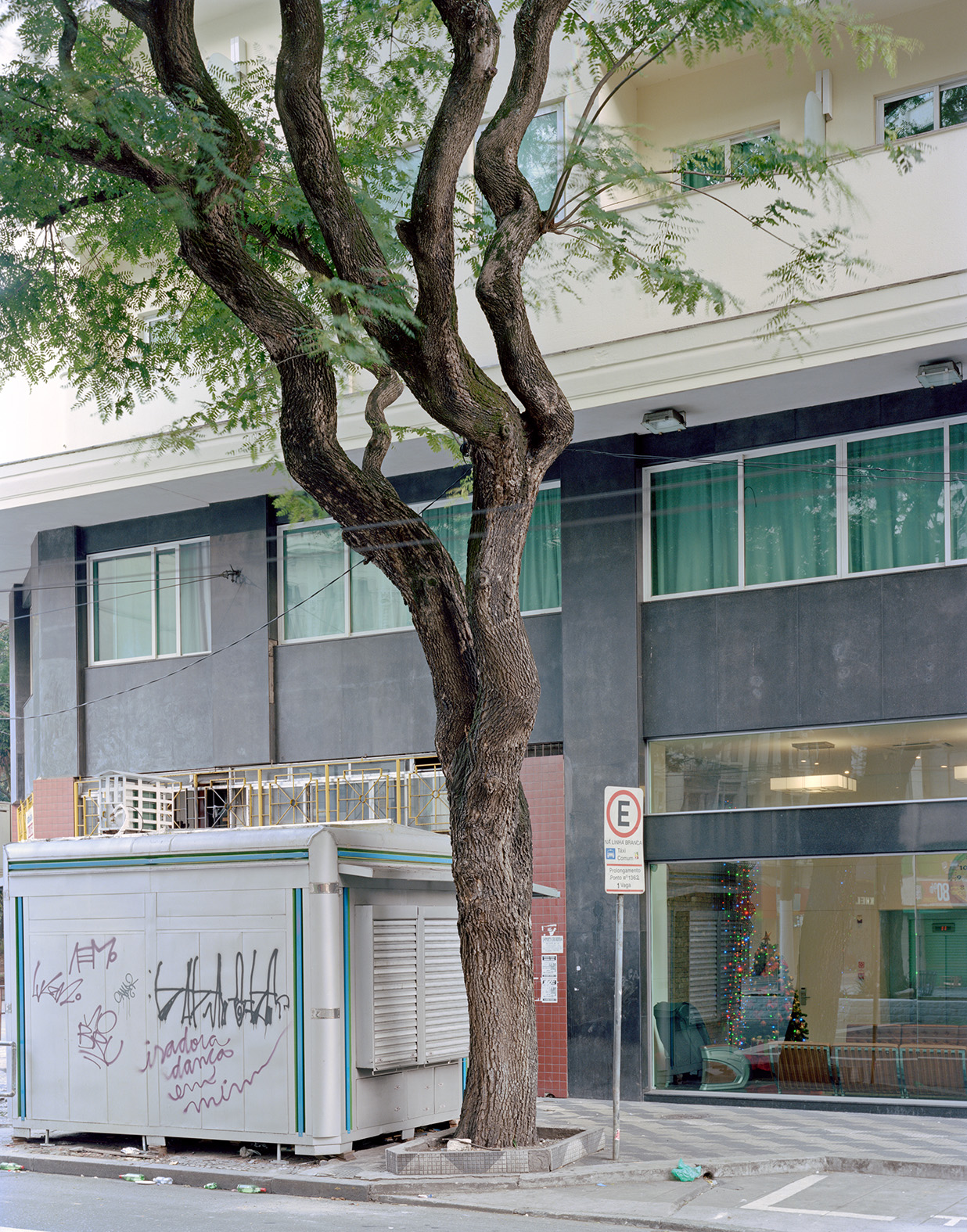


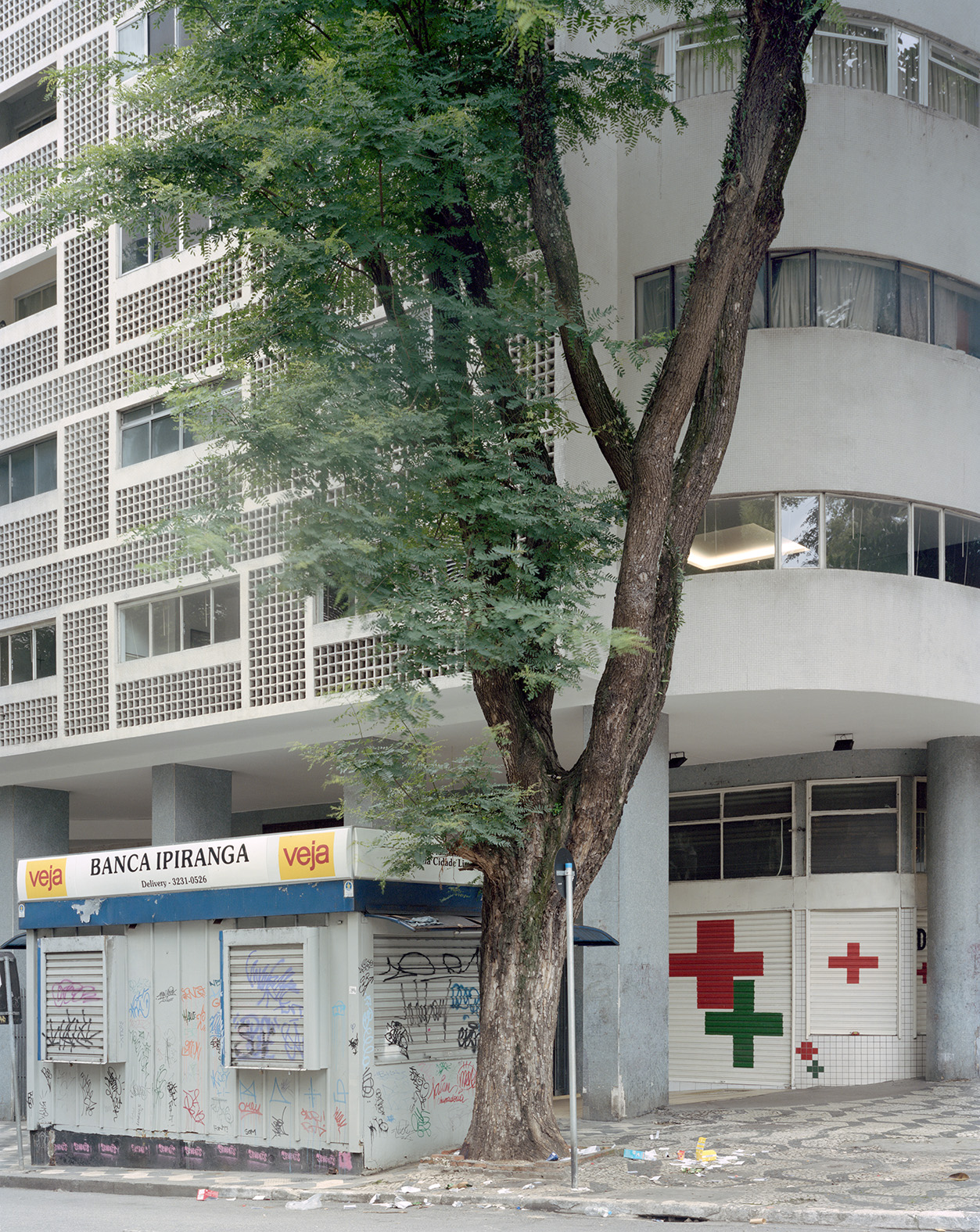
Ao caminhar pela Ipiranga, protegido do calor pela sombra das Tipuanas, observo seus troncos. Seu desenho guarda a história, os gestos e escolhas de 60 anos de vida na cidade. A busca pela luz que passa pela fresta entre dois edifícios ou pelo espaço deixado pela presença de um estacionamento. Vemos também, as podas intensas e contínuas que evitam que seus ramos danifiquem a infraestrutura da cidade. Seu corpo se desenha também por eventos extraordinários como o choque de um ônibus, um raio ou uma grande chuva de verão. Quem sabe até pelo desejo, desejo de se colocar mais perto de outra Tipuana. De se expor a chuva e a brisa que carrega mensagens químicas de parentes distantes.
Olhar seus troncos é observar o desenho de um corpo no tempo e no espaço da cidade. Um corpo biológico, vivo, que interage e percebe seu entorno, que modifica e é transformado por ele. Um corpo que se desenvolve dentro de uma temporalidade vegetal e não humana, mas que ao ser colocado no contexto da cidade vive em dois tempos, o de seu corpo e o da funcionalidade no espaço.
Funcionalidade é uma palavra que define bem nossa relação com essas árvores e que nos impede de percebe-las por inteiro, e quem sabe de poder escutá-las. Seus corpos nos contam muito sobre o espaço que construímos e que assumimos como morada, seus ciclos de vida nos falam do tempo, um tempo distinto do tempo que vivemos nas cidades. Essas imagens compõem uma série de retratos no tempo, como todos os retratos, esses também são espelhos.
____
Walking along Avenida Ipiranga, protected from the heat by the shade of the Tipuana trees, I observe their trunks. Their shape holds the history, gestures and choices of 60 years of life in the city. The search for light that passes through the gap between two buildings or the space left by the presence of a parking lot. We also see the intense and continuous pruning that prevents its branches from damaging the city's infrastructure. Its bodies are also shaped by extraordinary events such as the crash of a bus, a lightning bolt or a heavy summer rains. Maybe it's even by desire or will. Desire to get closer to another Tipuana or to be exposed to the rain and the breeze that carries chemical messages from distant relatives.
To look at their trunks is to observe the shaping of a body by time and the space of the city. A biological, living body that interacts with and perceives its surroundings, that modifies and is transformed by it. A body that develops within a plant and non-human temporality, but which, when placed in the context of the city, lives in two times, that of its body and that of its functionality in space.
Functionality is a word that well defines our relationship with these trees and prevents us from fully perceiving them. Their bodies tell us a lot about the space we have built and taken on as a home, their life cycles tell us about time, a time that is different from the time we live in cities. These images make up a series of portraits in time, and like all portraits, these are also mirrors.
Olhar seus troncos é observar o desenho de um corpo no tempo e no espaço da cidade. Um corpo biológico, vivo, que interage e percebe seu entorno, que modifica e é transformado por ele. Um corpo que se desenvolve dentro de uma temporalidade vegetal e não humana, mas que ao ser colocado no contexto da cidade vive em dois tempos, o de seu corpo e o da funcionalidade no espaço.
Funcionalidade é uma palavra que define bem nossa relação com essas árvores e que nos impede de percebe-las por inteiro, e quem sabe de poder escutá-las. Seus corpos nos contam muito sobre o espaço que construímos e que assumimos como morada, seus ciclos de vida nos falam do tempo, um tempo distinto do tempo que vivemos nas cidades. Essas imagens compõem uma série de retratos no tempo, como todos os retratos, esses também são espelhos.
____
Walking along Avenida Ipiranga, protected from the heat by the shade of the Tipuana trees, I observe their trunks. Their shape holds the history, gestures and choices of 60 years of life in the city. The search for light that passes through the gap between two buildings or the space left by the presence of a parking lot. We also see the intense and continuous pruning that prevents its branches from damaging the city's infrastructure. Its bodies are also shaped by extraordinary events such as the crash of a bus, a lightning bolt or a heavy summer rains. Maybe it's even by desire or will. Desire to get closer to another Tipuana or to be exposed to the rain and the breeze that carries chemical messages from distant relatives.
To look at their trunks is to observe the shaping of a body by time and the space of the city. A biological, living body that interacts with and perceives its surroundings, that modifies and is transformed by it. A body that develops within a plant and non-human temporality, but which, when placed in the context of the city, lives in two times, that of its body and that of its functionality in space.
Functionality is a word that well defines our relationship with these trees and prevents us from fully perceiving them. Their bodies tell us a lot about the space we have built and taken on as a home, their life cycles tell us about time, a time that is different from the time we live in cities. These images make up a series of portraits in time, and like all portraits, these are also mirrors.
Tipuana Tipu, 2016 – 2020
Photographs:
Analog 4X5 Negative / Archival Pigment Prints.